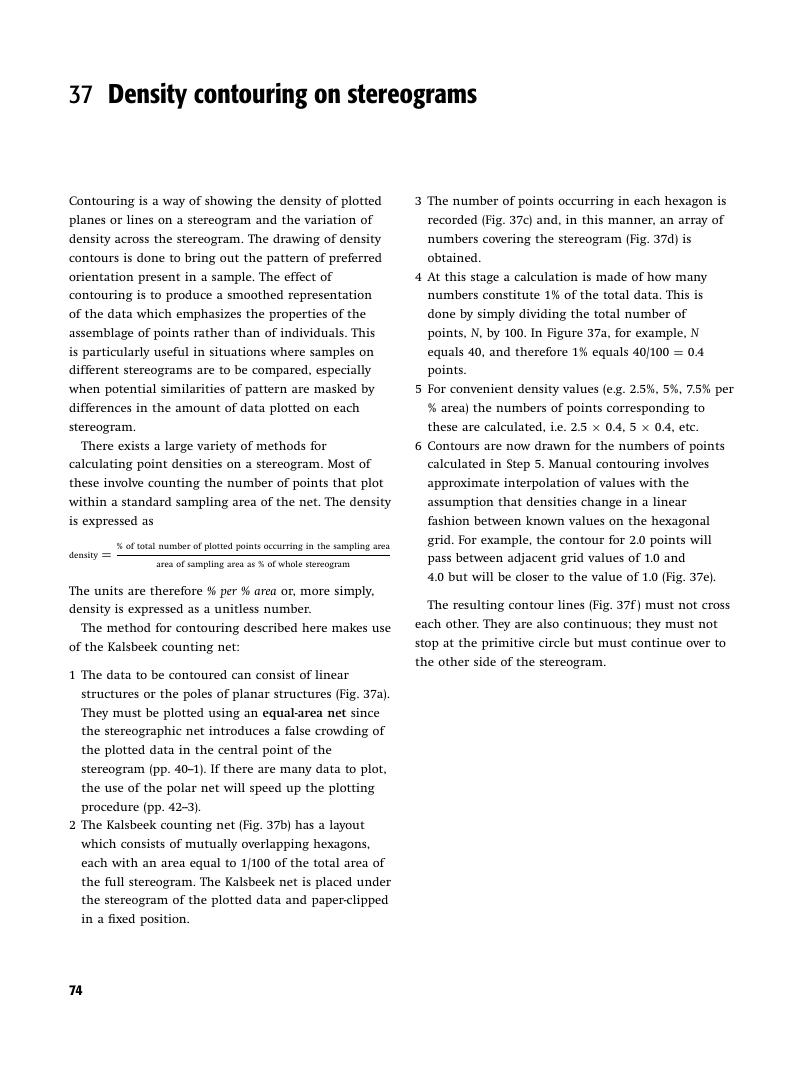Book contents
- Frontmatter
- Contents
- Preface
- Acknowledgements
- Stereographic Projection Techniques for Geologists and Civil Engineers
- 1 Geological structures of planar type
- 2 Measuring and recording the orientation of planar structures
- 3 Geological structures of linear type
- 4 Measuring and recording the orientation of lines
- 5 Why do we need projections?
- 6 Idea of stereographic projection
- 7 Approximate method of plotting lines and planes
- 8 Exercises 1
- 9 The stereographic net
- 10 Precise method for plotting planes. Great circles and poles
- 11 Precise methods for plotting lines 1. Where the plunge of the line is known
- 12 Precise methods for plotting lines 2. Where the line is known from its pitch
- 13 The intersection of two planes
- 14 Plane containing two lines
- 15 Apparent dip
- 16 The angle between two lines
- 17 The angle between two planes
- 18 The plane that bisects the angle between two planes
- 19 Projecting a line onto a plane
- 20 Stereographic and equal-area projections
- 21 The polar net
- 22 Analysing folds 1. Cylindricity and plunge of axis
- 23 Analysing folds 2. Inter-limb angle and axial surface
- 24 Analysing folds 3. Style of folding
- 25 Analysing folds 4. The orientation of folds
- 26 Folds and cleavage
- 27 Analysing folds with cleavage
- 28 Faults 1. Calculating net slip
- 29 Faults 2. Estimating stress directions
- 30 Cones/small circles
- 31 Plotting a cone
- 32 Rotations about a horizontal axis
- 33 Example of rotation about a horizontal axis. Restoration of tilt of beds
- 34 Example of rotation. Restoring palaeocurrents
- 35 Rotation about an inclined axis
- 36 Example of rotation about an inclined axis. Borehole data
- 37 Density contouring on stereograms
- 38 Superposed folding 1
- 39 Superposed folding 2. Sub-area concept
- 40 Example of analysis of folds. Bristol area
- 41 Geometrical analysis of folds. Examples from SW England
- 42 Example of analysis of jointing. Glamorgan coast
- 43 Geotechnical applications. Rock slope stability
- 44 Assessing plane failure. Frictional resistance
- 45 Assessing plane failure. Daylighting
- 46 Assessing wedge failure
- 47 Exercises 2
- 48 Solutions to exercises
- Appendix 1 Stereographic (Wulff) equatorial net
- Appendix 2 Equal-area (Lambert/Schmidt) equatorial net
- Appendix 3 Equal-area polar net
- Appendix 4 Kalsbeek counting net
- Appendix 5 Classification chart for fold orientations
- Appendix 6 Some useful formulae
- Appendix 7 Alternative method of plotting planes and lines
- Availability of computer programs for plotting stereograms
- Further reading
- Index
37 - Density contouring on stereograms
from Stereographic Projection Techniques for Geologists and Civil Engineers
Published online by Cambridge University Press: 05 June 2012
- Frontmatter
- Contents
- Preface
- Acknowledgements
- Stereographic Projection Techniques for Geologists and Civil Engineers
- 1 Geological structures of planar type
- 2 Measuring and recording the orientation of planar structures
- 3 Geological structures of linear type
- 4 Measuring and recording the orientation of lines
- 5 Why do we need projections?
- 6 Idea of stereographic projection
- 7 Approximate method of plotting lines and planes
- 8 Exercises 1
- 9 The stereographic net
- 10 Precise method for plotting planes. Great circles and poles
- 11 Precise methods for plotting lines 1. Where the plunge of the line is known
- 12 Precise methods for plotting lines 2. Where the line is known from its pitch
- 13 The intersection of two planes
- 14 Plane containing two lines
- 15 Apparent dip
- 16 The angle between two lines
- 17 The angle between two planes
- 18 The plane that bisects the angle between two planes
- 19 Projecting a line onto a plane
- 20 Stereographic and equal-area projections
- 21 The polar net
- 22 Analysing folds 1. Cylindricity and plunge of axis
- 23 Analysing folds 2. Inter-limb angle and axial surface
- 24 Analysing folds 3. Style of folding
- 25 Analysing folds 4. The orientation of folds
- 26 Folds and cleavage
- 27 Analysing folds with cleavage
- 28 Faults 1. Calculating net slip
- 29 Faults 2. Estimating stress directions
- 30 Cones/small circles
- 31 Plotting a cone
- 32 Rotations about a horizontal axis
- 33 Example of rotation about a horizontal axis. Restoration of tilt of beds
- 34 Example of rotation. Restoring palaeocurrents
- 35 Rotation about an inclined axis
- 36 Example of rotation about an inclined axis. Borehole data
- 37 Density contouring on stereograms
- 38 Superposed folding 1
- 39 Superposed folding 2. Sub-area concept
- 40 Example of analysis of folds. Bristol area
- 41 Geometrical analysis of folds. Examples from SW England
- 42 Example of analysis of jointing. Glamorgan coast
- 43 Geotechnical applications. Rock slope stability
- 44 Assessing plane failure. Frictional resistance
- 45 Assessing plane failure. Daylighting
- 46 Assessing wedge failure
- 47 Exercises 2
- 48 Solutions to exercises
- Appendix 1 Stereographic (Wulff) equatorial net
- Appendix 2 Equal-area (Lambert/Schmidt) equatorial net
- Appendix 3 Equal-area polar net
- Appendix 4 Kalsbeek counting net
- Appendix 5 Classification chart for fold orientations
- Appendix 6 Some useful formulae
- Appendix 7 Alternative method of plotting planes and lines
- Availability of computer programs for plotting stereograms
- Further reading
- Index
Summary

- Type
- Chapter
- Information
- Publisher: Cambridge University PressPrint publication year: 2004

